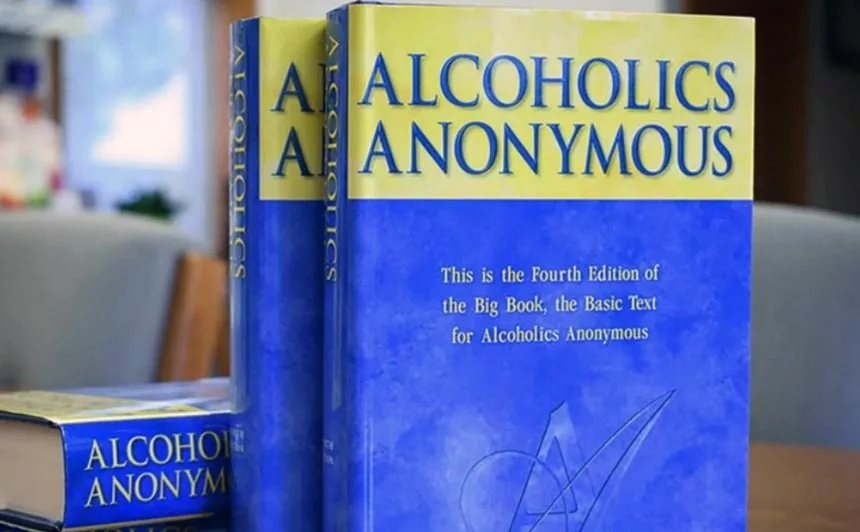The Central Pillars of AA
Table of Contents
If you are looking for help overcoming an addiction, you may have heard of Alcoholics Anonymous (AA). Alcoholics Anonymous has helped millions of people around the world to recover from alcohol and drug use over the last century. But what makes Alcoholics Anonymous so successful and what are the central pillars of Alcoholics Anonymous?
Well, it’s all about the AA Big Book (the Alcoholics Anonymous basic text) – the foundational guide on which Alcoholics Anonymous is based. The Big Book’s first edition appeared in 1939! Let’s take a look at the central pillars that make up this book and how they can help in recovery.
At the heart of the Alcoholics Anonymous Big Book are the twelve steps. These steps provide a blueprint for recovery from addiction by helping individuals surrender to a higher power, admit their faults, make amends, and live a life of sobriety. Each step is an important part of recovery, with each one building upon the last until lasting sobriety is achieved.
Alcoholics Anonymous World Services provides support groups for people around the world, so no matter where you’re located, you can try Alcoholics Anonymous.
If you need help learning more about Alcoholics Anonymous and getting connected with treatment, don’t hesitate to contact Find Addiction Rehabs. We are here to help!
What is The Alcoholics Anonymous Big Book?

The first edition Big Book of Alcoholics Anonymous – the basic text – is a cornerstone resource in the substance abuse recovery community. It has quite a history – it was written in 1939 by Bill Wilson and Dr. Robert Smith (Dr. Bob), the co-founders of Alcoholics Anonymous, to provide support for people struggling with alcoholism and alcoholic behavior.
Since then, the book has become an important part of Alcoholics Anonymous, used by many addiction treatment programs and recovery groups around the world. It has been republished a number of times; a second edition appeared in 1955; the third edition appeared in 1976; and a fourth edition was published in 2001! Alcoholics everywhere carry the message to people who want to find a solution to their alcoholism.
A Foundational Text for Getting Sober
The AA Big Book provides a clear outline for understanding and tackling alcoholism. Its chapters outline 12 steps that individuals can use as a guide to develop greater self-awareness and find their way back to sobriety. In addition, personal histories from other recovering alcoholics throughout the book serve as examples of what an individual’s journey could look like if they commit to going from alcoholism to sobriety.
The book also covers topics such as relapse prevention, healthy coping mechanisms, and developing relationships with supportive peers and family members. These essential skills help individuals sustain their recovery long-term—the ultimate goal of any successful treatment plan.
By providing clarity on how to approach addiction from all angles, The Big Book serves as an invaluable resource for both those dealing with addiction and their loved ones looking for guidance on how to support them through the process.
Understanding The Big Book can be an invaluable asset in helping anyone dealing with addiction or substance abuse take charge of their recovery journey. The basic text of The Big Book has helped millions by sharing the steps and describing the personal stories of alcoholics.
The Big Book of Alcoholics Anonymous: Women Suffer Too

The AA Big Book is the basic text of Alcoholics Anonymous and is known worldwide: it has helped literally countless people struggling with addiction. While the book was written by men and primarily for men at the time, women can apply the principles outlined in the book to their own lives and find healing from addiction.
The most important thing to remember when using The Big Book of Alcoholics Anonymous is that it is not gender specific. While much of the language and personal histories used in the book were written with men in mind, they are just as applicable to women who are looking for help in overcoming substance abuse.
This means that women do not need to feel overwhelmed or discouraged by a text written primarily for men—it is still relevant and useful no matter your gender.
Another key point to keep in mind when applying the 12 steps is that, while there are some differences between men’s and women’s experiences with addiction, there are also commonalities that everyone can relate to.
For example, both genders will experience feelings of guilt and shame related to their addictions, so it can be helpful for everyone to focus on forgiving themselves and finding ways to move forward without those negative emotions weighing them down. Additionally, one of the fundamental components of recovery—reaching out for support—is something that all individuals need regardless of gender.
Why Does The AA Big Book Have Chapters Describing Personal Stories?
The Big Book of Alcoholics Anonymous is a foundational resource for those in recovery from addiction. It contains the 12 Steps, a program that has been used for decades to help people get and stay sober.
But what many people don’t know is that the AA Big Book also includes several chapters describing the personal histories of other alcoholics who have overcome their addictions through the 12 Steps. So why does the Big Book contain many personal stories?
The Power of Narrative
At its core, the AA Big Book is an autobiography—it tells the story of how members of Alcoholics Anonymous (AA) overcame their addictions and started living healthier, more productive lives. But it’s much more than just a collection of facts and figures; it’s an inspiring narrative filled with details about individual struggles, triumphs, and everything in between. By introducing readers to real-life examples of successful recoveries, the AA Big Book provides hope that addiction can be overcome with help from others.
The AA Big Book and Dr. Bob’s Nightmare
Dr. Bob was renowned for his groundbreaking work in addiction recovery. He candidly shared the details of his personal experience with alcohol and substance abuse. His words paint a vivid picture of the oppressive cycle of addiction—a nightmare that is all too familiar to many people.
The Cycle of Addiction
Dr. Bob vividly described the physical and psychological toll that addiction took on him, noting that he “used to promise my wife, my friends, and my children that I would drink no more—promises which seldom kept me sober even through the day, though I was very sincere when I made them.”
This is an experience common to many individuals who are trapped in the cycle of addiction—the seemingly unending struggle between wanting to stop drinking or using drugs and being unable to overcome the cravings and dependence on those substances.
The great thing about Alcoholics Anonymous (AA) is that there are no new stories; almost anything you share about personal histories is relatable to someone else.
The Impact on Family
It’s not just individuals dealing with addiction who suffer; their families also feel its effects in myriad ways. Dr. Bob’s personal stories and narratives demonstrate this point—in addition to breaking promises to himself, he also broke promises to his wife, children, and friends who had put their trust in him time after time only for him to relapse again and again.
People struggling with addiction often have difficulty maintaining close relationships due to their substance use disorder, leaving loved ones feeling hopeless as they watch their family members slip further into the depths of despair brought on by addiction.
Bill’s story is also a profound one and shows the difficult battle with the nature of alcoholism.
The Need for Treatment
Dr. Bob ultimately found success in overcoming his addictions through Alcoholics Anonymous (AA). Today, nearly 90 years later, Alcoholics Anonymous remains one of the most popular forms of treatment for individuals who are dealing with alcoholism or drug abuse issues.
No matter what form it takes – alcohol abuse, drug abuse, or any other type of substance use disorder – addiction can be a nightmare for anyone affected by it – both those struggling with it and their loved ones alike. Fortunately, there is hope through the AA Big Book.
Let Us Help You Find a Treatment Program for Your Drinking
Alcohol can affect all aspects of our lives, negatively impacting work and relationships, as well as our physical and mental health. Fortunately, with the right treatment program in place, individuals can take control of their drinking habits and create healthier lifestyles. If you are struggling with an alcohol use disorder or feel your drinking is getting out of control, it’s important to reach out for professional help.
We offer personalized assessments that will connect you with treatment to address your struggles. We can also offer external links that will take you to resources about Alcoholics Anonymous. Let us help you start on the path to recovery today, contact Find Addiction Rehabs today.
All phone calls are confidential, so please reach out in confidence today to get options for a solid foundation in sobriety!


